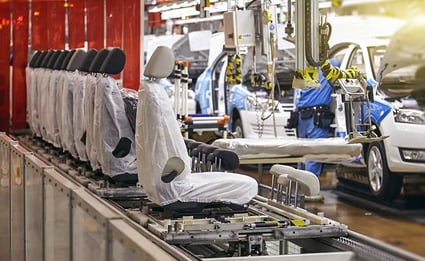Are Supply Chain Disruptions Damaging Your Company’s Reputation?
Nancy Sarpolis - November 09, 2021

The impact of Supply Chain disruptions
Supply chain disruptions can do more than just impact the bottom line; they can also put a company’s reputation in jeopardy. Material shortages, backlogged production schedules, equipment failures and missed delivery windows mean customers and consumers aren’t getting what they need, when they need it.
Reputation and the bottom line
While disruptions often take an immediate toll in lost sales, the damage to an organization’s reputation can have much longer-term consequences. What’s more, the impact of reputational damage can be felt in other areas of the business, according to a report by WillisTowersWatson. Recruitment and retention difficulties, a reduced customer base, increased legislation and losing the “benefit of the doubt” in the time of crisis can be byproducts of a poor company image.
Reputation is also playing an increasingly larger role in an organization’s overall market value. The World Economic Forum’s 2019 survey of 2,000 global executives estimated that reputation accounts for 63 percent of a company’s market value, up from 25 percent in 2012. An AxiosHarris Poll further shows companies that don’t manage a crisis well lost an average of 30 percent of market value following their reputational crisis. Conversely, the poll shows that highly responsive companies gained an average 20 percent in market value.
While it is easy to rationalize that catastrophic events occur only once in a lifetime, the data suggests that significant unforeseen circumstances are impacting supply chains much more frequently. McKinsey reports that companies can now expect supply chain disruptions lasting a month or longer to occur every 3.7 years. Over the course of a decade, the average company can also expect to lose nearly half of one year’s profits from supply chain disruptions.
The case for digitalization
The time for digital transformation is now. “Artificial intelligence (AI), internet of things (IoT), predictive analytics, and other transformative technologies can help enterprises respond to sudden shifts in demand and supply trends, and plan for such shifts in advance,” according to the Harvard Business Review. “Enterprises that had developed strong digital capabilities in advance of the pandemic were better able to cope with the disruption with agility and resilience than those that hadn’t.”
A report from McKinsey confirms the importance of digital technologies in mitigating supply chain shockwaves. “The shift to just-in-time and lean production systems has helped companies improve efficiency and reduce their need for working capital, but now they may need to strike a different balance between just-in-time and ‘just in case,’” McKinsey reports. “The ability to reroute components and flex production dynamically across sites can keep production going in the wake of a shock. This requires robust digital systems as well as the analytics muscle to run scenarios based on different responses.”
Optimizing production planning and scheduling
To thrive in the new normal, planners will need digital capabilities that give them an overview of the entire supply chain and allow them to optimize their production planning and scheduling. Because many manufacturing plants produce a range of products that all “compete” for resources—including raw materials, time, machine-hours, and person-hours—a planner’s ability to manually track these resources is going to become more limited as they grow more numerous. Manufacturing Operations Management technologies such as Advanced Planning and Scheduling (APS) solutions can be the answer, offering a complete view of every machine, person, process, and other resource, plus associated costs. APS creates a planning environment in which the right resources can be applied to the right orders at the right time and allow planners to match throughput more closely to demand by analyzing various possibilities across multiple touchpoints.
With APS, planners can adjust production plans to keep things moving—no matter what unexpected event might occur—and achieve the goal of improving responsiveness as well as reputation.
If you want to learn more get your Guide to Production Planning
In this Guide you will learn:
-
How to build resilience
-
How to increase efficiency
-
How to use integrated APS planning services for production planning
-
What must-have features of an APS solution you need
-
Which KPI’s you can expect
LATEST POSTS
- Understand Circular Economy in The Manufacturing Industry
- How Can Industry 4.0 IT Integration Be Achieved Smoothly?
- The Significance of Order Sequencing in Discrete Manufacturing
- How to improve your Supply Chain Management: The Power of Control Towers
- Optimizing Human Resource Scheduling in Manufacturing: A Technological Approach



